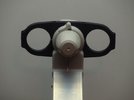The Rascals
Member
- Joined
- Oct 1, 2016
- Messages
- 435
- Reaction score
- 106
- Points
- 43
- Age
- 58
- My Satellite Setup
- Clarke-Tech 5100C, Freesat V8 Super, Stab HH 120 Motor, Laminas OFC1200C
- My Location
- Cork
Good Evening to Everbody.
The plan is to purchase a Laminas Dish 1.2M or 1.5M later in the 3rd quarter of the year, should I buy a feedhorn for it, and if so what improvement (if any) this would give me.
I am sticking with Ku Band but will venture into the Ka and C Bands later.
Regards
The Rascals
The plan is to purchase a Laminas Dish 1.2M or 1.5M later in the 3rd quarter of the year, should I buy a feedhorn for it, and if so what improvement (if any) this would give me.
I am sticking with Ku Band but will venture into the Ka and C Bands later.
Regards
The Rascals

